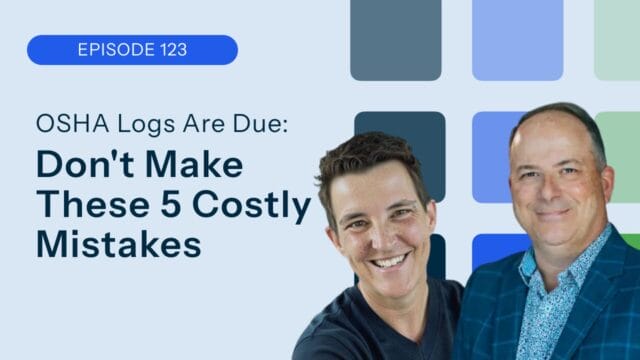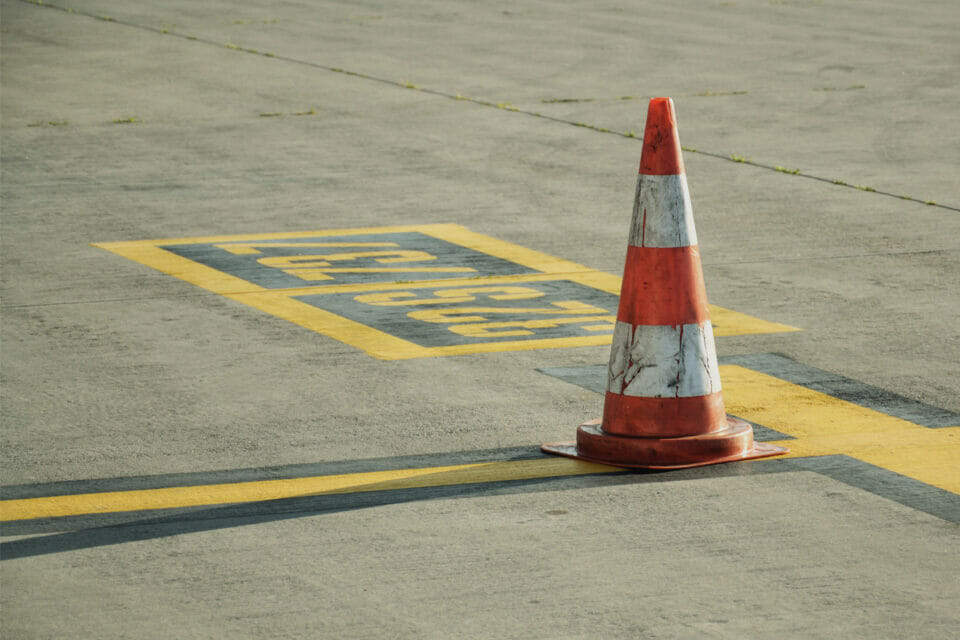
OSHA Logs Are Due: Don’t Make These 5 Costly Mistakes | Risk Matrix Episode 123
THE RISK MATRIX Cutting-edge podcast on occupational safety and risk management. Hosted by industry titans: JAMES JUNKIN, MS, CSP, MSP,…
Airport officials must identify and prevent airport construction hazards to safeguard employees, contractors, and the general public from harm.

Airport construction involves a lot of complicated tasks, like building new terminals, renovating existing structures, repairing runways, and maintaining the airport infrastructure as a whole. With these activities come a range of risks to contractors, employees, passengers, airport staff, and the general public. As such, identifying these airport construction hazards is the first step to creating effective safety programs and reducing the risks.
This article discusses ten airport construction hazards all safety teams should know.
Construction at airports can involve a range of hazards, some of which are unique to aviation facilities. Ten such hazards are as follows:
Aircraft movement on runways and taxiways can pose a danger to construction workers. Airport officials can mitigate this risk through proper communication and coordination with airport authorities and air traffic control.
Musculoskeletal injuries can happen on airport construction sites because workers have to lift heavy objects, work in awkward positions, and do the same movements repeatedly. Safety teams can limit these injuries by using ergonomic design strategies for laying out work areas, offering adequate rest and recovery times, and encouraging workers to communicate injuries before they worsen.
Weather conditions at airports can be unpredictable and present hazards for construction workers, such as extreme temperatures, high winds, and heavy rain or snow.
Airport officials should ensure that workers are adequately hydrated and wear light-colored, loose-fitting clothing in hot weather. During colder seasons, workers should dress in layers with appropriate cold-weather gear. During windy weather, workers should secure loose materials and equipment to prevent them from becoming airborne hazards.
When planes take off or land, the jet blast and wake turbulence can be dangerous for construction workers, especially those working on or near the runway. Officials can lessen these risks by finding and marking safe work areas, putting up barriers and signs to show where hazards are, and giving workers the proper safety gear.
Airport construction hazards may involve using dangerous materials such as jet fuel, lubricants, and chemicals. Risks associated with these materials can include fire, explosions, and toxic exposure. Safety teams can mitigate these hazards by ensuring workers receive adequate training, use appropriate PPE (personal protective equipment), and follow safe handling and storage procedures.
Workers typically use heavy machineries like cranes, loaders, and bulldozers during airport construction, resulting in the risk of getting hit by or caught between the equipment. Safety teams can mitigate these hazards by properly maintaining and inspecting equipment and training and monitoring operators.
Workers may have to work with electrical equipment and power lines during airport construction, which can be dangerous. Airport officials can address these risks by adequately training workers, using LOTO (lockout/tagout procedures), and requiring protective gear.
Airport construction may involve working at heights, such as on rooftops, scaffolding, or elevated platforms. Dangers associated with working at height include falls, slips, and trips. Utilizing the right fall protection gear, receiving proper training, and having the ground crew watch out for those workers can reduce this risk.
Noise hazards are a significant concern for airport construction workers. The constant noise of airplanes, machinery, and other equipment can lead to hearing damage, stress, and other health effects. To avoid these airport construction hazards, officials should consider installing sound barriers, swapping out loud equipment for quieter ones, and limiting how long personnel work in high-volume areas.
Workers may suffocate or get hurt working in underground tunnels, tanks, or other small, closed spaces, like those found in airport construction. Safety teams can reduce these risks by identifying confined spaces, ensuring airflow, and adequately training workers.
Identifying construction hazards at airports is essential for maintaining a safe and secure work environment. Due to the wide range of tasks involved in airport construction projects, from building new facilities to repaving runways, it is crucial to fully understand potential dangers to keep workers and others as safe as possible.
By developing effective safety programs, providing appropriate training, and implementing strict safety protocols, airport authorities can reduce the likelihood of accidents and injuries, ultimately ensuring an airport construction project’s safe and successful completion.
However, your ability to identify and avoid these hazards depends significantly on the risk management technologies you employ.


THE RISK MATRIX Cutting-edge podcast on occupational safety and risk management. Hosted by industry titans: JAMES JUNKIN, MS, CSP, MSP,…

THE RISK MATRIX Cutting-edge podcast on occupational safety and risk management. Hosted by industry titans: JAMES JUNKIN, MS, CSP, MSP,…
We’ll send you practical and insightful supply chain risk management info that can benefit your business. Plus, important company updates that keep you in the loop.
